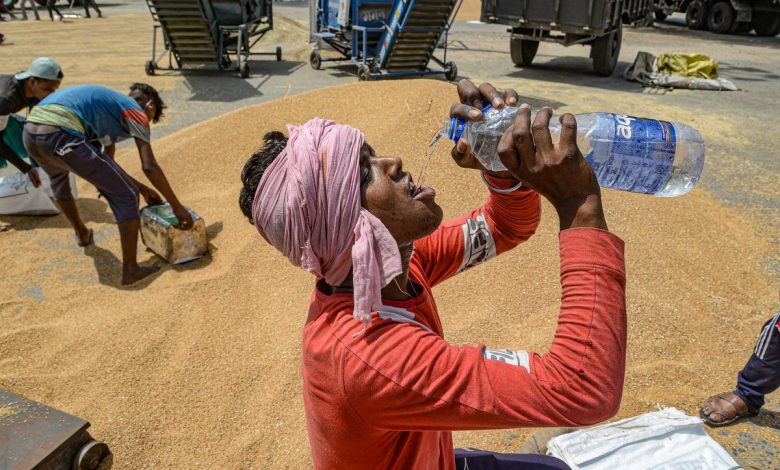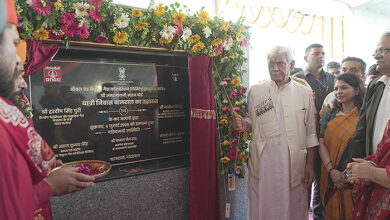India And Pakistan Early Heatwave 30 Times More Likely Because Of Climate Change – Weather Attribution Study
The early onset of the heatwave, combined with the lack of rain, hit India’s wheat production. As a consequence, the government announced a ban on wheat exports, further increasing global prices.

The long-running heatwave in India and Pakistan, which has caused widespread human suffering and hit global wheat supplies, was about 30 times more likely to happen because of human-caused climate change, according to rapid attribution analysis by an international team of leading climate scientists. Large parts of India and Pakistan experienced an unusually early and long-running heatwave, beginning in early March, which has largely persisted until now. March was the hottest in India since records began 122 years ago, with Pakistan also seeing record temperatures; the heatwave intensified in April. March was also extremely dry, with 62% less rain than normal over Pakistan and 71% below normal over India. At least 90 people have died as a result of the heatwave, a toll that will almost certainly increase substantially with more reporting.
The early onset of the heatwave, combined with the lack of rain, hit India’s wheat production. As a consequence, the government announced a ban on wheat exports, further increasing global prices. India had previously expected to export a record 10 million tons of wheat, which would have helped make up for the shortfall caused by Russia’s invasion of Ukraine. Across the world heatwaves occurring today have been made more likely and more intense by climate change. To quantify the effect of climate change on the long-running high temperatures in India and Pakistan, the scientists analysed weather data and computer simulations to compare the climate as it is today, after about 1.2°C of global warming since the late 1800s, with the climate of the past, following peer-reviewed methods.
The analysis focused on the average maximum daily temperatures during March and April, in Northwestern India and Southeastern Pakistan, which were most severely affected. The results showed that an event like the current long-running heatwave is still rare, with a 1% chance of happening each year, but human-caused climate change has made it about 30 times more likely to happen, meaning it would have been extraordinarily rare without the effects of human-induced climate change.
Until overall greenhouse gas emissions are halted, global temperatures will continue to increase and events like these will become more frequent. For example, if global temperature rise reaches 2°C, a heatwave like this one would be expected as often as once every five years, the scientists found. Even slower emission cuts would likely make such a heatwave yet more frequent still.
The results might underestimate how common such a heatwave is now and how frequently it can be expected if greenhouse gas emissions continue, because the relatively short length of weather data records limited the statistical analysis that the researchers could make.
The study was conducted by 29 researchers as part of the World Weather Attribution group, including scientists from universities and meteorological agencies in India, Pakistan, Denmark, France, the Netherlands, New Zealand, Switzerland, the UK and the US.
According to Dr Friederike Otto, Grantham Institute, Imperial College London- “High temperatures are common in India and Pakistan but what made this unusual was that it started so early and lasted so long. Across much of both countries, people had little relief for weeks on end, with the costs particularly high for hundreds of millions of outdoor workers. We know this will happen more often as temperatures rise and we need to be better prepared for it.”
Prof Krishna AchutaRao, Centre for Atmospheric Sciences, IIT Delhi “Heat waves also have the potential to increase risk of forest fires and even droughts. Thousands of people in this region, who, to begin with, contributed very little to global warming, are now bearing the brunt of it and will continue to do so if emissions are not significantly cut globally.”
Prof Arpita Mondal, Civil Engineering, and Climate Studies, IIT Bombay
“In countries where we have the data, heatwaves are the deadliest extreme weather events. At the same time, they are the type of extremes most strongly increasing in a warming world. As long as greenhouse gas emissions continue, events like these will become an increasingly common disaster.”
Dr. Fahad Saeed, Islamabad-based climate scientist working with Climate Analytics said that– “It is important to put emphasis on calling heatwaves as disasters as many of the factors contributing to the impacts can be avoided. It is important to note that disasters have serious implications for compensation and relief mechanisms.”
Dr Emmanuel Raju, Department of Public Health, University of Copenhagen, Denmark– “The most distressing thing is that the “limits to adaptation” are being breached for a large poor population of the region at the present level of global warming. One can imagine how bad it would be even for a 1.5°C warmer world. Any warming beyond 1.5°C can pose ‘existential threat’ for vulnerable populations in the
absence of a strong adaptation and mitigation action.”
“This heatwave, fuelled by climate change, is directly increasing food prices. India had planned to export record volumes of wheat this year, in response to the shortfall from Ukraine. Now, because of an event fuelled by climate change, most of those exports have been cancelled, pushing up global wheat prices and increasing hunger worldwide”. said Prof Robert Vautard, Institut Pierre-Simon Laplace, CNRS, Sorbonne Université
The writer of this article is Dr. Seema Javed, a known Environmentalist, Journalist and Communications Expert.




